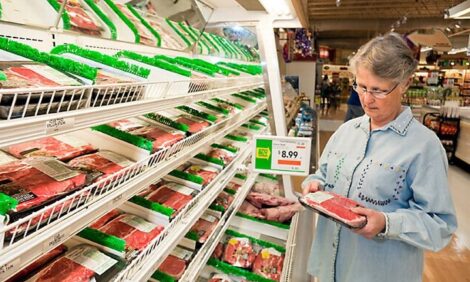



Risk of porcine disease is higher with garbage feeding
The feeding of food waste to pigs is illegal in a number of countries due to its links with the spread of porcine disease. With the fast movement of African swine fever, the Pork Checkoff and other swine health bodies are now questioning the safety of garbage feedingDespite many advancements in the US pork industry’s focus on disease risk mitigation, 28 states (along with Puerto Rico and the US Virgin Islands) still allow some type of garbage feeding to swine. While deemed acceptable by the USDA’s Animal Plant Health and Inspection Service (APHIS) when strict protocols are followed, the potential risk of foreign animal disease (FAD) transmission remains with this practice.
According to Dave Pyburn, senior vice president of science and technology for the Pork Checkoff, the practice of garbage feeding to pigs in the United States is somewhat of a holdover from the past.
“We used to feed many more hogs this way than we do now,” he says. “But the important thing is that if a producer does decide to do this type of feeding where it’s allowed, he or she must do so by strictly adhering to the APHIS guidelines.”
The Swine Health Protection Act (SHPA) regulates food waste containing any meat products fed to swine. Compliance with this act ensures that all food waste fed to swine is properly treated to kill disease organisms. Raw meat may transmit numerous infectious or communicable diseases to swine, including FADs such as foot-and-mouth disease, African swine fever, and classical swine fever.
Pyburn, who helped enforce the SHPA during his tenure at USDA, says there are three keys that reduce the risk of this practice if they are properly followed. These include making sure cooked and uncooked product is kept separate so there is no cross contamination; making sure equipment used for cooked product is not contaminated with uncooked product; and ensuring that all garbage is heated to a treatment level of 212 degrees Fahrenheit (boiling) for 30 minutes.
“While we would like to see garbage feeding used sparingly, if at all from a disease risk standpoint, it’s critical that anyone who is using this feeding method do so with the utmost attention to the exact regulations,” Pyburn says.
“It could be the difference between keeping the country free of foreign animal disease or not.”
Beyond garbage feeding, swine health experts also agree that any garbage, especially containing meat products such as human food scraps, should always be kept away from areas of feral swine. European authorities suspect this is how the recent African swine fever outbreak in Belgium may have been transmitted to wild pigs in that country.
.jpg)









